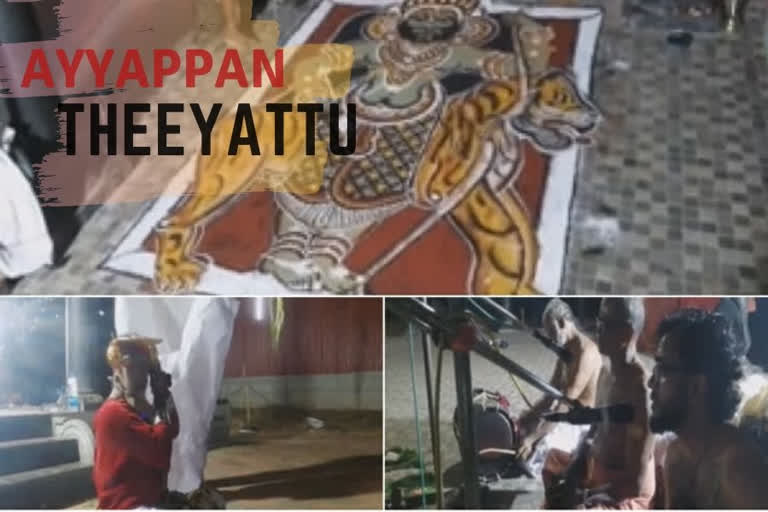Pathanamthitta (Kerala): Ayyappan Theeyattu, a religious and ritual art form of Kerala, presents life’s miseries through narrations, ballads and acts, while also being invocational to the deity.
It is high time that the authorities take serious efforts to preserve and pass on such traditional ritual art forms like Theeyyattu and Thottampattu without losing sheen, to the next generations.
Performed by Theeyadi Nambiyars, mostly in temples, palaces and brahmin households in this part of Kerala, Theeyattu (literally means dance with fire) are of two types basically; Ayyappan Theeyattu and Bhadrakali Theeyattu, presented in Ayyappa temples and Bhadrakali temples respectively.
The style of performance, the lyrics presented, the stories enacted, costumes, the Kalam (drawing on the floor) and everything is different for both, though the basic art form is the same. It is also assumed that Theyyattu (dance of god) evolved to be Theeyattu over the years.
There should be at least three performers to present an Ayyappan Theeyattu. The guru of the group will be the lead performer. Pictorial depictions of the incarnations of Lord Ayyappan are drawn in the Theeyattu Kalam based on the particular performance.
For the Kalam (floor drawing using fine herbal powders, natural pigments), five colours - white, yellow, black, green and red - of rice flour, turmeric powder, black powder (charcoal), green powder (powdered herbs) and red powder (kungumam - a mixture of slaked lime and turmeric) are used.
The Kalam is further decorated using betel leaves, areca nuts, coconuts, paddy grains, and lamps. As soon as the drawing is done, invocation and prayer begin.
Accompanied by percussion orchestra, the performance begins by singing and dancing, holding a fire torch. Three-beat or five-beat rhythm patterns are usually followed in Theeyattu.
Kalam ezhuthu (making the floor drawing), Kadhabinayam (enacting mythological stories) Kalam Pooja (prayer at the Kalam), Kalathilattam (dancing in the Kalam), Thiri uzhichil (action of swirling lit cotton wicks) are the main five segments of the whole Theeyyattu performance.
The Theeyattu performer reaches the stage wearing fresh white mundu layered with a red mundu, sandal paste, bhasmam (holy ash) and kungumam (a mixture of turmeric and slaked lime powder) on his forehead and tulsi leaf garlands around his neck.
After enacting the story, the performer takes the form of Ganikeshwara and dances further. The performer is said to reach a state of trance by the end of the performance and the oracle then erases the Kalam bringing the performance to a conclusion.
Also Read: Visually impaired Kerala boy becomes first student to write Class 10 board exam on computer



